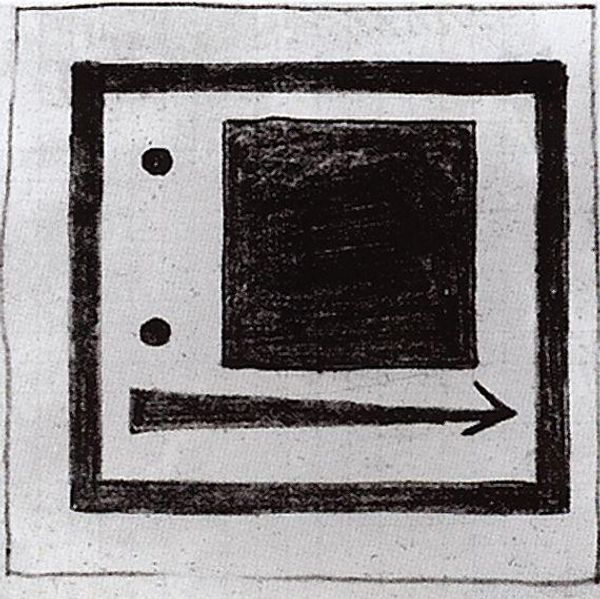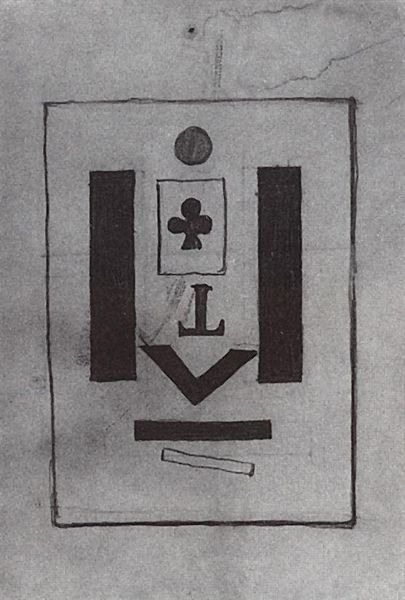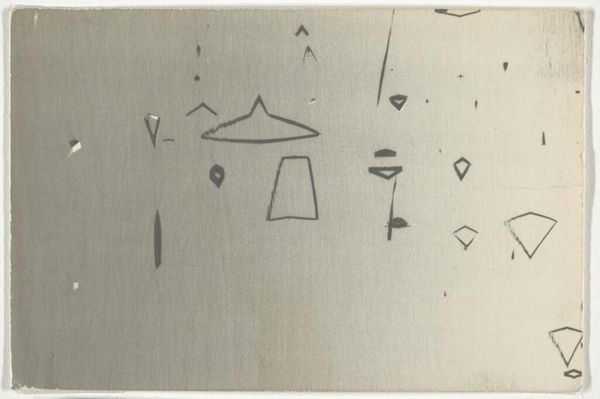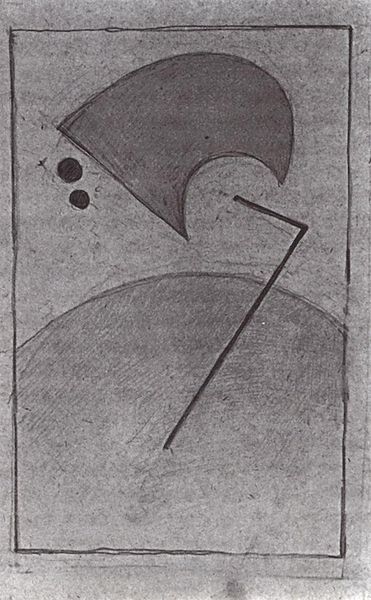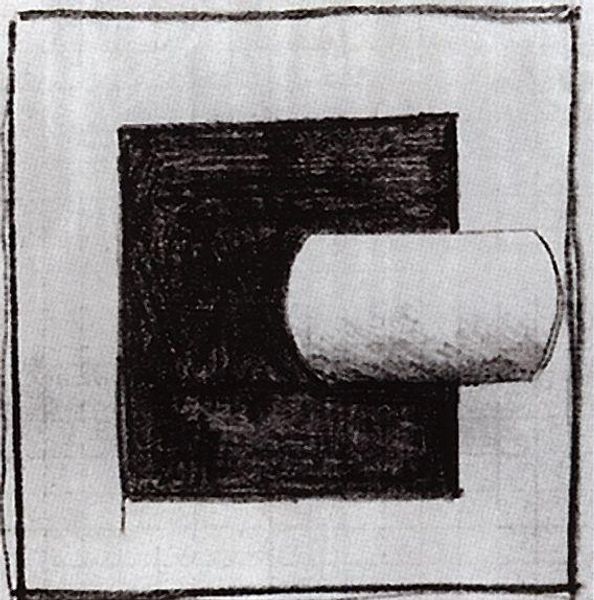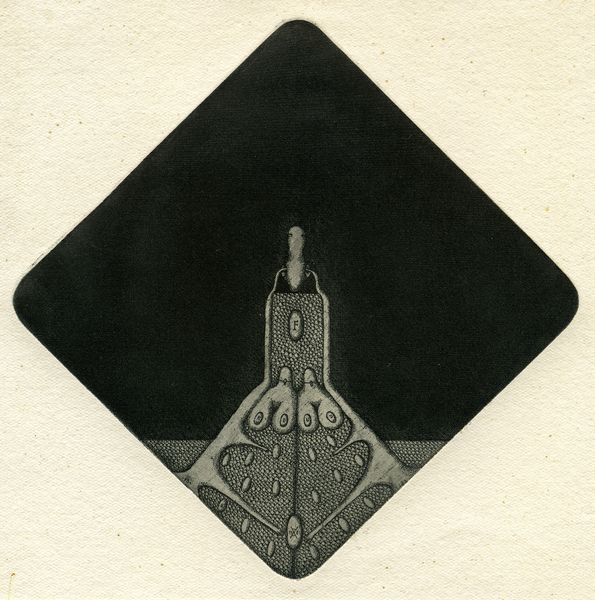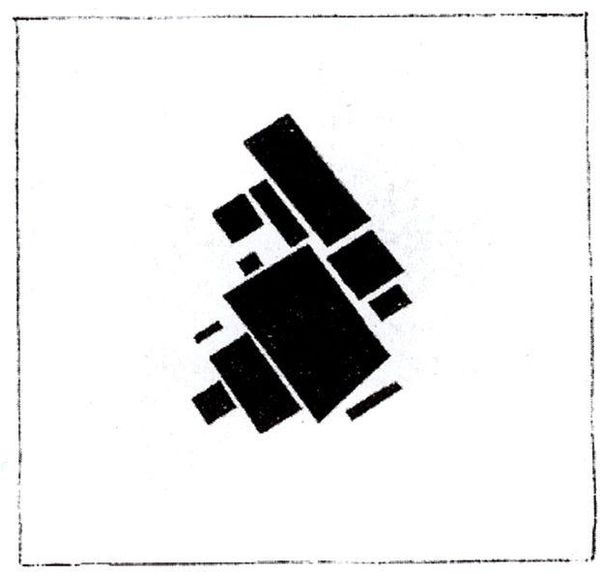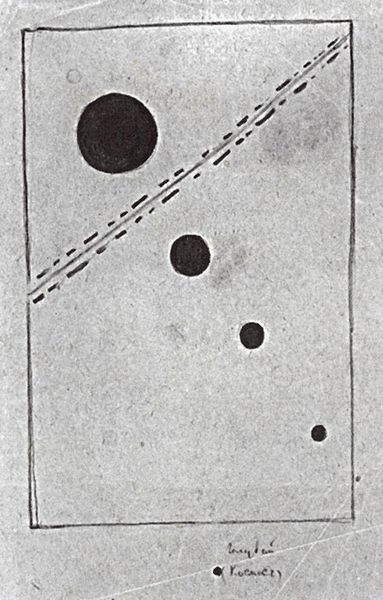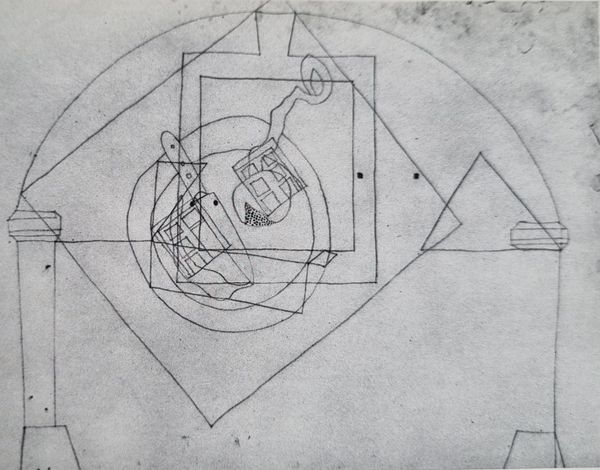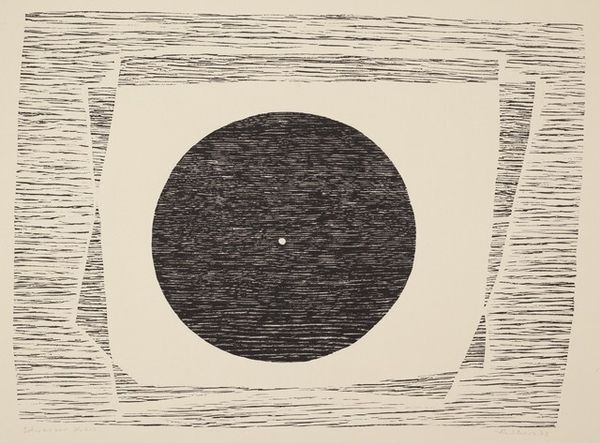
#
pencil drawn
#
amateur sketch
#
little shading
#
pencil sketch
#
personal sketchbook
#
limited contrast and shading
#
sketchbook drawing
#
quick sketch
#
tonal art
#
sketchbook art
Copyright: Public domain
Curator: Welcome. Today, we’re looking at "What Impudence!" a pencil drawing by Kazimir Malevich from 1915. The piece is composed of simple geometric forms stacked vertically—a circle, rectangle, square and inverted v-shape. What's your initial take on it? Editor: My first impression is of stark simplicity. The dark, almost crude rendering of these shapes against the paper feels quite forceful. I wouldn't say I immediately sense the impudence the title suggests, though, but a sense of boldness maybe? Curator: Interesting observation. Malevich, by 1915, was well on his way to developing his Suprematist aesthetic. We can read this sketch as a nascent exploration of non-objective form, an attempt to distill painting to its fundamental elements. Notice how he manipulates the tone within the square, creating a field of textural contrast that animates what could otherwise be a purely static form. Editor: Absolutely, and one must consider the context of its making; 1915 was during the first World War. Is it possible that this impudence references the boldness or perhaps even the arrogance of the forces in conflict? Perhaps Malevich wanted to critique societal aggression by contrasting its crude reality with the promise of Suprematism, as the better and peaceful alternative. Curator: That’s a perceptive interpretation. It's also crucial to remember that Malevich aimed to sever ties with traditional modes of representation and the old political regimes. His use of rudimentary geometric forms serves to detach art from established historical, socio-political narratives. These shapes have an existence independent of the visual world, an artistic statement against reality and tradition. Editor: But do you think severing ties from reality can, in itself, become a political stance? Perhaps an act of resistance. "Impudence" in the face of established norms. Isn’t all abstraction a product of its environment? The politics are baked in at that very first moment. Curator: Fair enough. While Malevich wanted Suprematism to represent the ‘zero degree’ of painting, the ultimate abstract symbol of the new, it’s difficult to entirely remove socio-historical interpretations, especially given the artwork's name. Editor: Precisely! It is, indeed, something of great value to behold. I think reflecting upon this artwork gives me a greater appreciation for both Malevich and the environment in which he worked. Curator: And for me, it has reinforced the brilliance of Malevich's reduction. Stripping away representational content allows us to engage directly with the visual elements themselves and their immediate context, be they pure, or political.
Comments
No comments
Be the first to comment and join the conversation on the ultimate creative platform.
